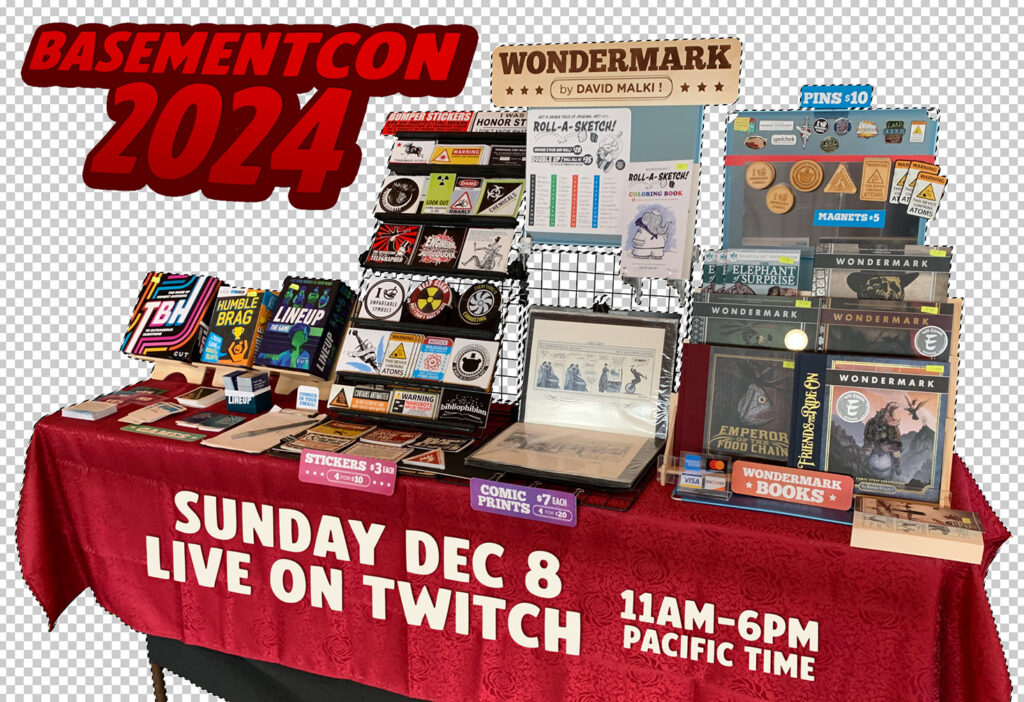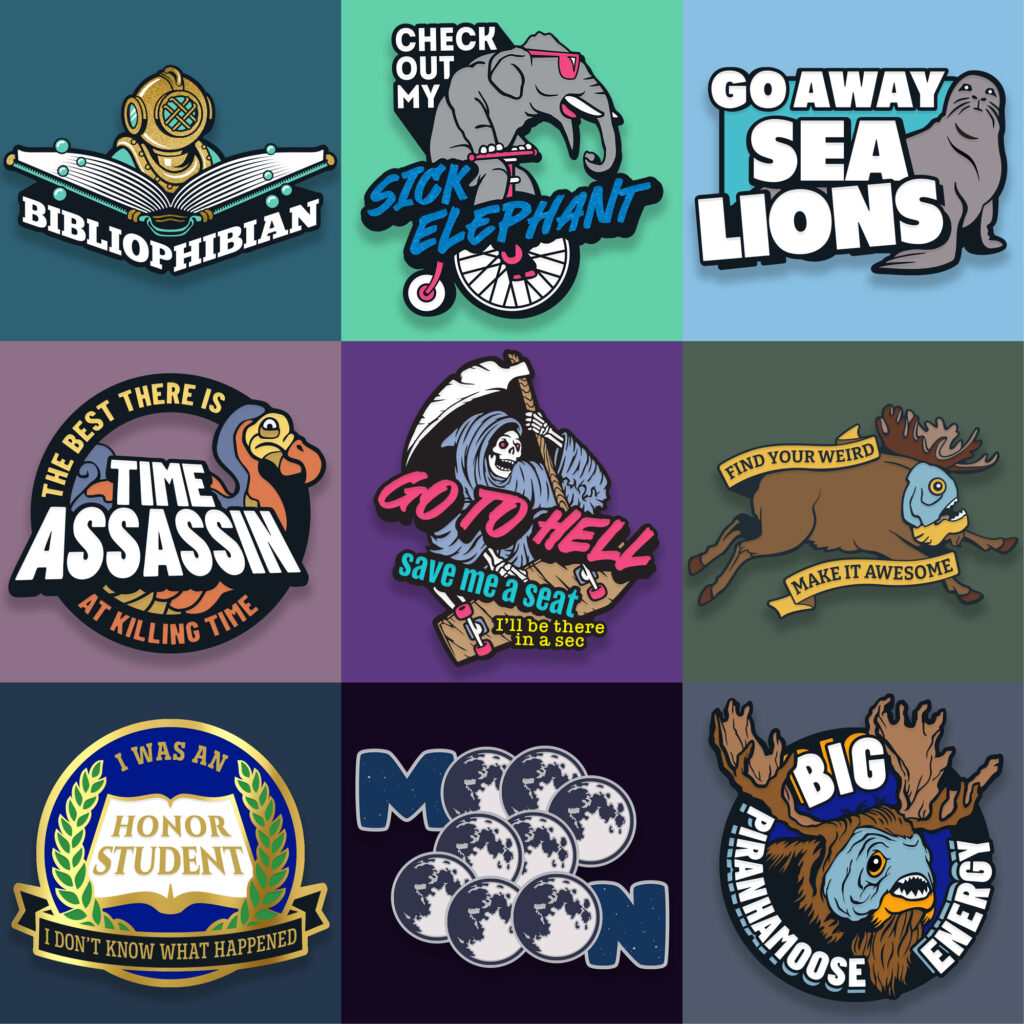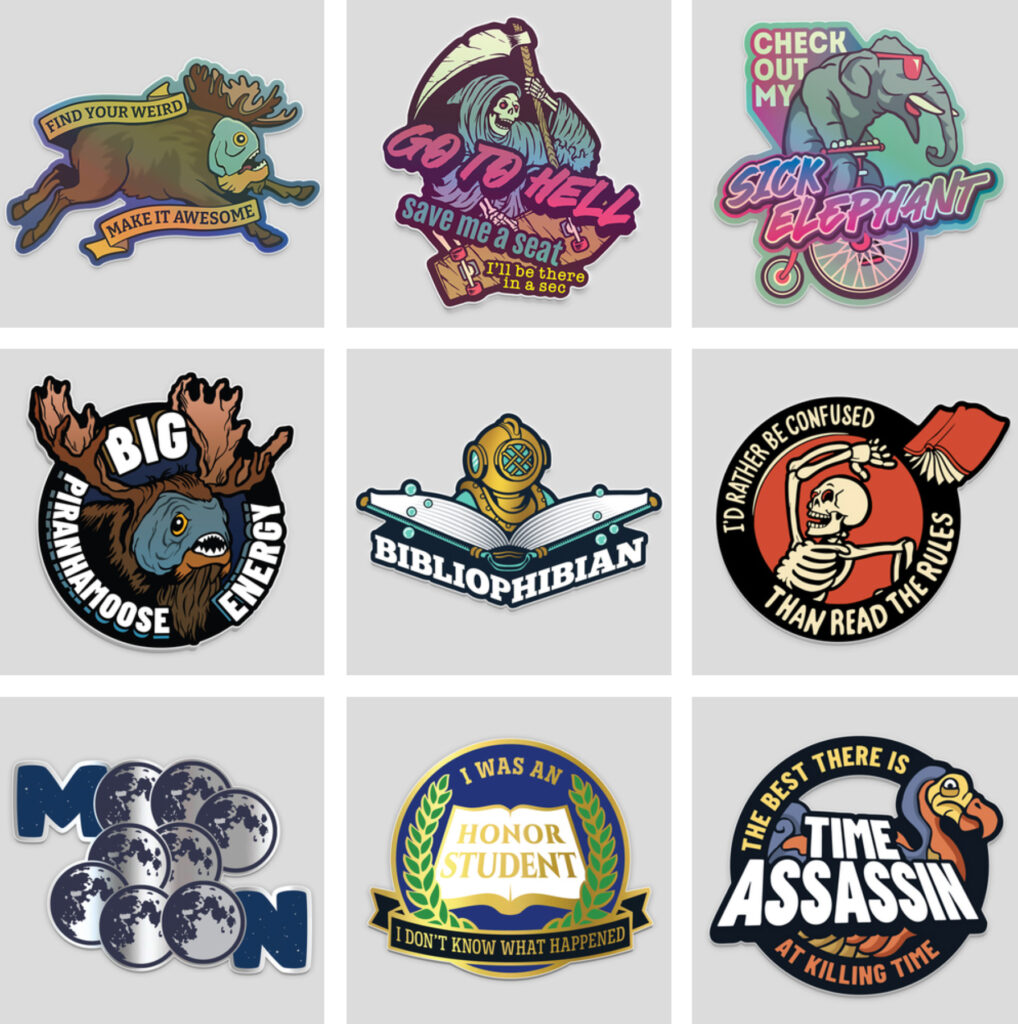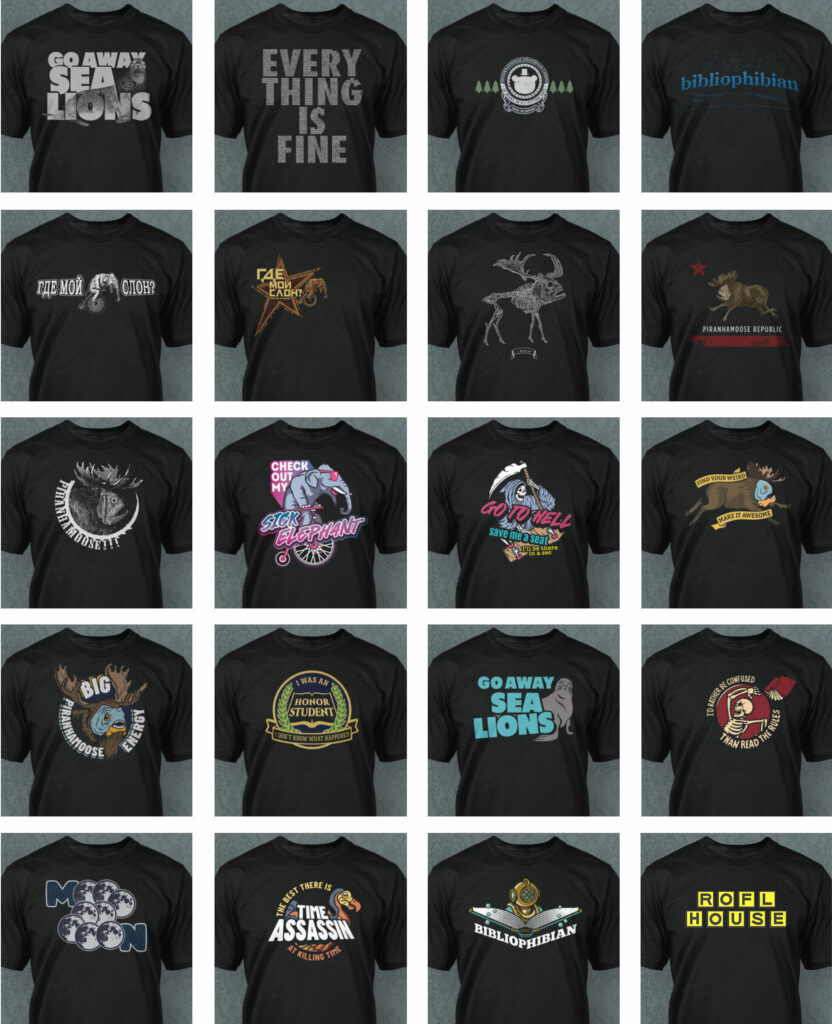
I’m doing a very simple one-day-only holiday promo – I’ve created a convention table at home, and you can visit it virtually!
It works like this:
- Tune in anytime you like on Twitch between 11am–6pm Pacific time on Sunday. I’ll be working on comics in between chatting with “attendees.”
- You can also pre-browse my current merch offerings on my site and on BackerKit to familiarize yourself with what’s available.
(I’m leaving the pre-order store from the pins project open until the end of the year. After that, some – but not all – of the products will migrate back to my online store.) - To “approach the table,” join a one-on-one call by going to wondermark.com/bc. This will open a Google Meet that will let us have a face-to-face conversation!
(Our call will be visible to the Twitch audience too, so you’ll be able to see whether I’m currently talking to anyone or not.) - While we chat, I’ll be happy to answer questions about any individual items you like; sign books or prints; and you can even commission a Roll-a-Sketch! Which I can probably draw right there while you watch!
- You don’t need to buy anything to join and chat! But if you DO want to buy something, I’ll create an online payment link for you.
All U.S. orders will get FREE SHIPPING for any orders placed at BasementCon! You don’t even have to pay for parking or overpriced convention-center pizza!
Of course, you can also place regular store orders (at the links above, or over at TopatoCo, where they offer an overlapping but distinct set of fine Wondermark products) and we’ll get those out promptly to you as well, no conversation required.
For example: Multi-Purpose Greeting Card Sets were out of stock for a while, but they’re back, baby – I’ve reprinted both the holiday editions and the general-purpose versions.
Hope to see you on Sunday!!




